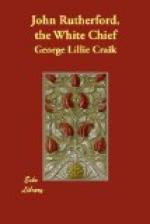Recent investigations, likewise, must be considered to have sufficiently proved that the wave of population, which has spread itself over so large a portion of the surface of the globe, has flowed from the same central region, which all history points to as the cradle of our race, and which may be here described generally as the southern tract of the great continent of Asia. This prolific clime, while it has on the one hand sent out its successive detachments of emigrants to occupy the wide plains of Europe, has on the other discharged its overflowing numbers upon the islands of the Pacific, and, with the exception of New Holland[AJ] and a few other lands in its immediate vicinity, the population of which seems to be of African origin, has, in this way, gradually spread a race of common parentage over all of them, from those that constitute what has been called the great Indian Archipelago, in the immediate neighbourhood of China, to the Sandwich Islands and Easter Island, in the remotest east of that immense expanse of waters.
The Malay language is spoken, although in many different dialects and degrees of corruption, throughout the whole of this extensive range, which, measured in one direction, stretches over nearly half the equatorial circumference of the globe, and in another over at least seventy degrees of latitude. The people are all also of the same brown or copper complexion, by which the Malay is distinguished from the white man on the one hand, and the negro on the other.
In New Zealand, however, as, indeed, in most of the other seats of this race, the inhabitants are distinguished from each other by a very considerable diversity in the shades of what may be called the common hue. Crozet was so much struck with this circumstance that he does not hesitate to divide them into three classes—whites, browns, and blacks,—the last of whom he conceives to be a foreign admixture received from the neighbouring continent of New Holland, and who, by their union with the whites, the original inhabitants of the country, and still decidedly the prevalent race, have produced those of the intermediate colour.
[Illustration: Two Maori Chiefs—Te Puni, or “Greedy,” and Wharepouri, or “Dark House.”]
Whatever may be thought of this hypothesis, it is certain that in some parts of New Zealand the natives are much fairer than in others. Cook remarks, in the account of his first voyage, that the people about the Bay of Islands seemed darker than those he had seen further to the south; and their colour generally is afterwards described as varying from a pretty deep black to a yellowish or olive tinge. In like manner, Marsden states that the people in the neighbourhood of the Shukehanga are much fairer than those on the east coast. It may also, perhaps, be considered some confirmation of Crozet’s opinion as to the origin of the darkest coloured portion of the population, that those who come under this description are asserted to be characterized, in addition, by the other negro peculiarity of a diminutive stature.[AK]




